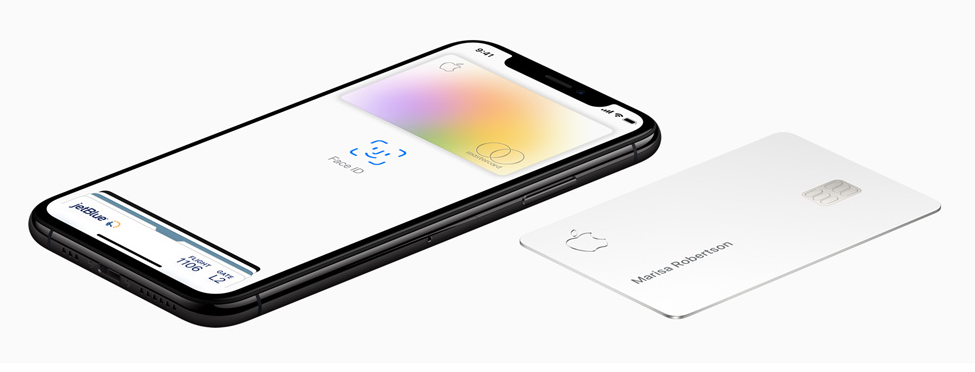Apple Card was announced on March 25 of this year in the last Apple Keynote. Far away are those conferences of the American company where Steve Jobs used to amaze us new mobile devices, tablets or other devices such as the Apple Watch.
The last Keynote of the Americans has left aside the hardware to focus on the software and their new services . For example, its new financial service, offered through Apple Pay and Wallet, which was announced along with other company´s expected projects such as:
- Apple News +, news service that will give us access to newspapers and magazines publications such as the Los Angeles Times, Wall Street Journal, Wired, Rolling Stone …
- Apple Arcade, streaming platform for video games. Its launch is planned for autumn in 150 countries. You will have more than 100 exclusive games playable on mobile, computer or through Apple TV.
- Apple TV +, the Apple service that aims to compete against Netflix, in a market dominated by this company. Its launch is planned for autumn in more than 100 countries and will include Amazon Prime or HBO productions among others.
Apple Card had a different schedule so, unlike the rest of the services, planned for autumn, it reached its first users in mid-August.
From the technological giant they promise a vast amount of benefits for their users, among which we would highlight the transparency that they say they offer, allowing to keep track of all expenses in real time through Wallet and Apple Pay, or the absence of commissions.
The alliance
No doubt they are three very important firms, but how do they contribute in the project? And, even more important, what do they get in return?
- Apple: Their contribution is more than obvious: Apple card, despite including a physical card, works mainly through Apple Pay and the Wallet app, making “contactless” payments through Apple devices, such as the iPhone or Apple Watch. In addition to providing all the necessary software to track payments and show this to users, Apple also provides a very important brand image, essential for the success of this initiative.
An important detail is that Apple ensures that they will not have access to the information that these payments generate, and that they will only be stored on the personal devices of each of the users. Apple offers Apple Card as an advantage or an accessory for an iPhone, trying to stop the decline in sales.
- Goldman Sachs: The financial institution supports any activity or transaction carried out by users, in addition to being responsible for accepting or not accepting credit applicants according to their history. A very coherent role, but that involves some controversy.
This alliance comes three years after Goldman launched its personal banking brand “Marcus”, in an attempt to restructure its business. They wanted to become the bank of ordinary people. Goldman granted personal loans worth 4,750 million dollars, of which 13% were granted to clients with FICO scores lower than 660, which would be similar to the definition of the profile to which the subprime were destined, according to CNN.
In this new project, Apple’s desire to send its card to everyone who can is causing the financial institution to accept profiles with unfavorable FICO scores, in exchange for expanding this business line that the company started in 2016 with Marcus.
- Mastercard: Although less mediatic and much simpler, the alliance with Mastercard is of vital importance, since it provides physical support to Apple’s initiative, thus allowing its users to make payments in those places where they do not accept “contactless” payments.
How does Apple Card work?
The name may fool us in a certain way: Apple Card is not a simple card, even if it includes a physical card. The “plastic” is not the center of the proposal, nor its main attraction.
The service can be used by downloading it to our iPhone using Apple Pay and Wallet. However, they have taken great care of all the details in their card design: it has no number, expiration date, or security keys, providing greater security to the card. It is made of titanium, which makes it a little thicker and heavier than other conventional cards. Not only is it safe, but also beautiful, as we would expect from any Apple product.

What does Apple want?
Its main objective is that iPhone and / or Apple Watch users make their payments through these devices. The existence of a card is something circumstantial, in order to provide users an effective payment method in those establishments that do not allow contactless payment.
The main advantages they offer us are the following:
- Total transparency in our personal finances.
- Help users save money. Apple Card can show us that we have spent the money, sectioning expenses by type and color by showing them on a graph. You can show us what we spend as accurately as showing us on a map the establishment in question.
- Apple returns 1% of the purchase when using the card, 2% when paying through Apple Pay and 3% if it comes to purchases in the Apple Store.
- They ensure total privacy, without accessing the information generated by the transactions. Although they assure that their Goldman Sachs partner needs access to it, but its commercial use is prohibited.
Would these incentives be enough for the success of this new service if it was not from Apple?
In reality, Apple’s strategy seems to be far from entering the personal finance sector fully. Tim Cook´s company tries to provide customers with their mobile phones all kinds of complementary services, at a time when their hardware no longer stands out from the competition. They need to maintain their “fan base”, in order to mantain their iPhone sales, as well as gain new users.